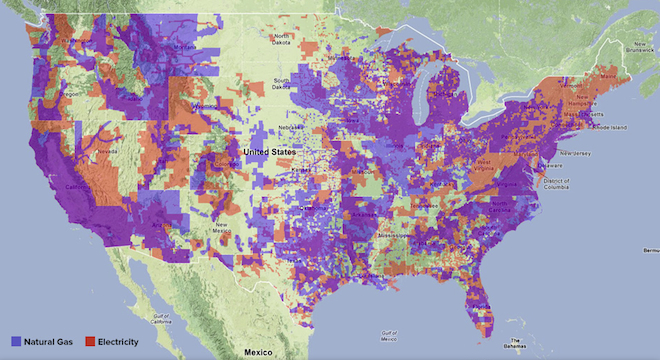It’s been a while since we last heard about the “Green Button“, the initiative announced by the White House in January, designed to incentivize utilities companies into making customers’ granular energy usage data openly available online.
In fact, the last major announcement from the White House about the initiative came in May, when it reported that enough utilities had signed-up to the effort to provide coverage on the energy usage statistics to 30 million American households and businesses.
But now a Boston-based software company claims to have quietly increased the availability of Green Button utilities data tenfold, from 30 million to 300 million customers.
The company is called MyEnergy and in some ways seems tailor made for the task of helping push the White House’s Green Button data out to more people, having been founded in 2007 with the goal of creating “the world’s single richest platform to help people understand their energy use and be incentivized to save.”
MyEnergy’s new product is called the “Universal Green Button.”
“As of mid-December, this technology will be deployed for several hundred utilities and will be available to all customers of those utilities,” said co-founder and CEO Ben Bixby, in an email to TPM.
Here’s MyEnergy’s own before and after maps comparing the expansion of coverage of Green Button utilities data as a result of its own Universal Green Button launch, with electricity in red and gas in purple.
Before

After

“MyEnergy has spent over five years developing our technology,” Bixby told TPM, noting it is “patent-pending.”
The company wasn’t worried it would get beat to the bunch on being the one to expand Green Button data outward though.
“Others have tried, but MyEnergy is the only to succeed at this approach to data retrieval
at such a massive scale,” Bixby continued, “The short answer to ‘why didn’t someone
else do this sooner’ is that: it’s really, really difficult to do and takes a couple years of dedicated and focused work to accomplish.”
Still, even the concept of the Green Button may seem esoteric to many utilities customers, who are used to getting paper bills in the mail containing just their last month’s energy usage.
But MyEnergy is hoping to change that, including the option for customers to get much more energy usage data in a human-readable format through either their desktop computers or mobile devices, for free in either case.
“The MyEnergy Universal Green Button is optimized for use on the go or in the field from your mobile device,” Bixby wrote to TPM. “If you access https://www.myenergy.com/greenbutton from a mobile device, the app automatically recognizes that and presents you with the mobile version; the mobile version also emails you your Green Button data, as many mobile devices are not able to download and store files to disk. Folks accessing from a computer are presented with the option to download their data in a variety of formats and for specified or unspecified ranges of time.”
In practice, that’s not always true, unfortunately: TPM found there was no Green Button data on MyEnergy for the electricity for this reporter’s apartment in Brooklyn, New York, provided by local utility ConEdison.
“Per the coverage maps, the Green Button is not yet widely enough available for us to begin accessing data from utilities in Green Button format,” Bixby acknowledged.
As for what statistics the company uses to back its claim that it has extended Green Button coverage tenfold since May, Bixby said the 300 million number “is reached by taking the total population reported by census figures within the geographic areas that fall within the coverage area of the MyEnergy Universal Green Button.”
MyEnergy also claims to be “the first provider of any kind to implement the Green Button for water data,” although that coverage is limited, too, for now, to “several dozen utilities throughout the country.”
Still, the venture-backed firm says it is pushing forward with plans to further expand its open utilities data offerings, including soliciting interested parties for a developer program and application programming interface (API) for Green Button data it plans to launch in 2013, called “MyEnergy Connect.” This effort is designed to allow developers to create apps that leverage the open utilities data to show further comparisons and allow users to manipulate it in other ways, finding more energy savings.
“We’re of course experimenting with the MyEnergy Connect ourselves, and we certainly expect to extend the MyEnergy platform with a few in-house apps ourselves,” Bixby said. “But, I can’t give *everything* away on that topic just yet. Stay tuned.”
When it comes to making a profit off the newly open energy data, Bixy said that MyEnergy “doesn’t yet account for any percentage of our business,” but added that “we already do a brisk business both with utilities and with energy efficiency and renewable energy service providers; we’re able to make good by doing good, generating revenue as we help our users save energy and money.”









